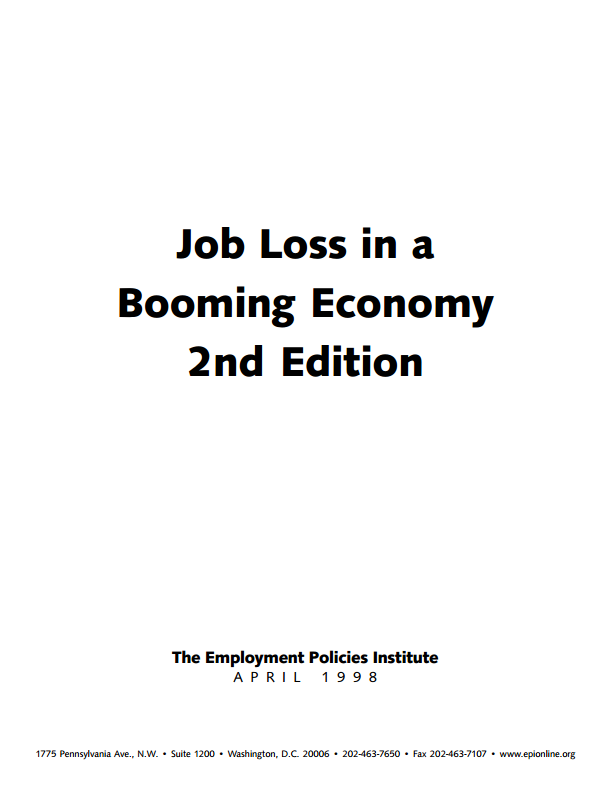During the fourth week of August 1996, President Clinton signed into law two bills with serious implications for the ability of low-skilled workers to find jobs. On the 20th, he signed a bill that would increase the federal minimum wage from $4.25 to $4.75 effective October 1, 1996, and from $4.75 to $5.15 on September 1, 1997. On the 22nd, he signed a bill that would “end welfare as we know it,” in part by requiring adult welfare recipients to find work within two years or lose their benefits. Lost in the fanfare over the signing of these two bills were the pernicious interactions that the new laws would have in the entry-level job market. Just as the welfare reform bill would be forcing hundreds of thousands of low-skilled adults into the job market, the higher minimum wage would be destroying the very jobs that could have offered these welfare recipients a first step on the ladder of economic success. Now, just as the clock is running out on those welfare recipients, organized labor and its supporters are pushing for yet another round of increases in the minimum wage.
The effect of such increases can only serve to further undermine the potential for welfare reform to succeed. Even in a booming economy, one key fact about welfare recipients cannot be ignored: most of them simply do not possess the skills needed to fill existing job vacancies. The classified ads are thick with job listings each week, but many welfare recipients lack the education and work skills required by employers. For example, two-thirds of welfare recipients scored in the bottom quartile of the Armed Forces Qualifying Test, with one-third in the bottom decile.1 They might qualify for entry-level jobs if the wage rates reflected the skill levels of these applicants. Sadly, with each upward increment in the minimum wage, hundreds of thousands of entry-level job opportunities are destroyed.
Recently, in championing further increases in the minimum wage, Senator Ted Kennedy (D-MA) relied upon two erroneous claims: (1) “employment does not go down because the minimum wage goes up”; and (2) benefits from minimum wage increases go primarily to low-income families. In this article we outline the solid economic analysis that refutes these two claims. First, we calculate from official government employment data that the October 1, 1996, 50-cent minimum wage increase destroyed approximately 215,000 teen jobs, affecting about 3.5 percent of the 6.2 million teens that were working before the increase. In other words, employment does go down when the minimum wage goes up, and it went down after the 1996 increase despite strong performance in the economy as a whole. The more recent September 1, 1997, minimum wage increase has undoubtedly destroyed even more jobs, but it is still too early to accurately measure these additional losses. Second, we calculate from the same data that the average family income for minimum wage workers is more than $35,000, hardly what most Americans would classify as “low-income.” Thus, the minimum wage increase does not target low-income families.
